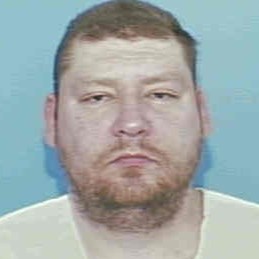
b: 1963
John William Byrd Jr.
Summary
Name:
Years Active:
1983Birth:
December 18, 1963Status:
ExecutedClass:
MurdererVictims:
1Method:
StabbingNationality:
USA
b: 1963
John William Byrd Jr.
Summary: Murderer
Name:
John William Byrd Jr.Status:
ExecutedVictims:
1Method:
StabbingNationality:
USABirth:
December 18, 1963Years Active:
1983Date Convicted:
August 19, 1983bio
John William Byrd Jr. was born on December 18, 1963, and lived most of his life in Ohio. By the early 1980s, Byrd was known to associate with individuals involved in petty crimes. His companions included John Brewer and William Danny Woodall. Byrd had a criminal history involving theft and robbery before the events leading to his capital conviction. Byrd’s lifestyle before the crime was marked by frequent alcohol use and unemployment. Reports indicated that he spent much of his time with Brewer and Woodall driving around in a red cargo van. In April 1983, this association culminated in a series of robberies that ended with the fatal stabbing of a store clerk.
murder story
On April 17, 1983, Monte Tewksbury, a 40-year-old father of three, was working alone at a convenience store in Hamilton County, Ohio, during his night shift when John William Byrd Jr. and John Brewer entered wearing masks. Byrd carried a five-inch bowie knife while Brewer acted as lookout. The men robbed the store, stealing cash and valuables, including Tewksbury’s watch, wallet, and wedding ring. Despite the victim’s cooperation, Byrd stabbed him in the side, causing massive internal bleeding. After cutting the store’s telephone line to prevent an emergency call, the pair fled in a red van.
Despite his injuries, Tewksbury managed to use an outside telephone to call his wife and describe the attack before collapsing. He was rushed to a hospital but died hours later. Minutes after the stabbing, Byrd and Brewer attempted another armed robbery at a nearby store but failed to open the cash register and fled. Witnesses reported seeing the red van, which police located shortly afterward. Inside, officers discovered masks, a knife, bloodstains, stolen items from Tewksbury, and a cash register drawer from the second store. Byrd, Brewer, and Woodall were arrested.
At trial, prosecutors presented evidence including blood matching the victim’s type on Byrd’s pants, the stolen watch in his possession, and testimony describing his violent actions during the second attempted robbery. Brewer and Woodall received life sentences, while Byrd was convicted as the principal offender and sentenced to death on August 19, 1983.
Byrd maintained his innocence throughout his 18 years on death row, with his appeals focused on claims that Brewer had been the actual killer. Brewer executed multiple affidavits claiming responsibility, but courts rejected these statements as unreliable and inconsistent with evidence and the victim’s dying declarations. Byrd’s execution was stayed multiple times, including one in 1995 just 45 minutes before it was scheduled, but ultimately, the courts, including federal appeals and the U.S. Supreme Court, upheld his conviction and sentence.
In 2001, the Ohio Parole Board recommended against clemency, and Governor Bob Taft denied it in February 2002. On February 19, 2002, John William Byrd Jr. was executed by lethal injection at the Southern Ohio Correctional Facility, becoming the third person executed since Ohio reinstated the death penalty in 1981. He used his final statement to denounce capital punishment and claimed innocence until his death, leaving the case as one of Ohio’s most debated executions.